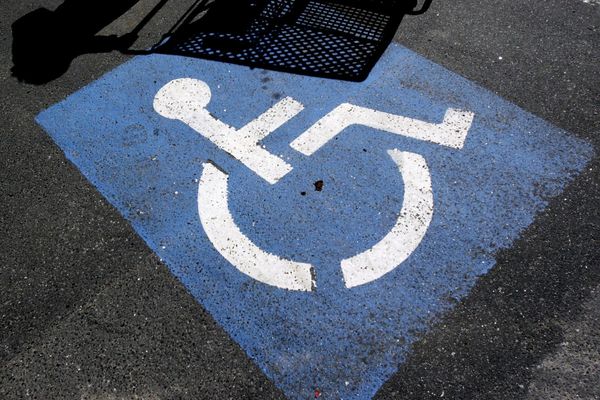
Microplastics – fragments of plastic smaller than 5mm – are accumulating in the environment. They’re found in soil, water, food, even in human lungs, placentas and blood. These plastic particles shed from items we use daily, such as synthetic clothes, tyres, plastic packaging and paint.
Scientists, medical professionals and environmental bodies have raised growing concern about the potential impacts of microplastics on environments and human health. Studies suggest that microplastics could affect soil health, reduce food productivity and compromise ecosystem functioning. As a result, economic growth may be hindered.
Some nations are acting. French regulations require that filters are put on new washing machines to capture microfibres. The EU has recently targeted microplastic inputs from artificial turf and paint and has passed rules to limit microplastic discharges in wastewater treatment.
US states are beginning to regulate microplastic contamination in drinking water. In fact, California has set some of the world’s first safe water testing requirements for microplastic contamination.
Yet, the UK hasn’t kept pace. There is still no national plan to reduce emissions. There are no legal targets for reducing microplastic pollution, no limits and no timeline for action. The only regulation to date (a 2017 ban on microbeads in rinse-off cosmetics) addresses just a fraction of the problem. Microbeads only account for less than 5% of the microplastics ending up in the environment.
With evidence building and risks mounting, the UK urgently needs a more coordinated response. Drawing on insights from leading UK scientists and policy experts, here are three ways the UK can begin to close the gap.
1. A national roadmap
The UK has no coordinated plan to reduce microplastic pollution. Microplastics are mentioned in several UK government strategies – such as the Plan for Water and Environmental Improvement Plan – but these don’t have clear targets, timelines or regulatory action.
A national roadmap can tackle the problem more effectively by expanding the narrow scope of the microbeads ban to cover major sources of both primary (intentionally manufactured) and secondary microplastics (produced from the breakdown of larger plastics).
To make this feasible, design standards for plastic products need to focus on reducing microplastics shedding upstream, rather than relying on clean-up alone.
As with any effective regulation, measurable targets to reduce microplastics entering the environment can be paired with a programme for monitoring – so human exposure and microplastic levels in air, water and soil can be tracked to assess whether policies are working.
2. Regulate the biggest sources
The ban on microbeads in rinse-off cosmetics was an important early step, but it only scratches the surface. Most microplastic pollution comes from larger, less visible sources: car tyres, synthetic textiles, paint and fertilisers made from sewage sludge. These everyday sources account for most microplastic emissions, yet remain largely unregulated in the UK.
Read more: Car tyres shed a quarter of all microplastics in the environment – urgent action is needed
By making manufacturers responsible for the highest levels of microplastic pollution, a widespread industry shift can be achieved. That includes setting standards to reduce fibres shedding from textiles and requiring filters in washing machines, addressing tyre wear and road runoff in the transport sector and phasing out the use of contaminated sludge and plastic mulch films in agriculture. These are not distant or unrealistic goals. Many could be achieved by updating existing waste, water and environmental regulations.

To date, the government has eschewed precaution and tended to shelve action where evidence of harm is still emerging. While research continues to evolve, existing scientific evidence provides a strong basis for meaningful policy actions today. What’s missing is a shift in focus – from marginal sources to the main drivers – and the political will to prioritise real reductions over symbolic moves.
3. Tackle plastic production
Most microplastics begin as larger plastic products that slowly break down over time. We need to reduce how much plastic is produced and used in the first place.
The UK government’s stated aims for creating an economy in which less resources are used overall there is greater reuse of existing resources (otherwise known as a circular economy) focus on reducing waste and improving material use, but they don’t yet address how overproduction of plastics contributes to microplastic pollution.
Setting targets to cut the volume of single-use plastic on the market would help prevent microplastics polluting the environment. Simplifying how products are designed and labelled can also enable safer disposal, reuse or recycling and reduce how much plastic breaks up.
At the same time, alternatives (including biodegradable or bio-based plastics) must be carefully assessed. Without proper oversight, these substitutes risk repeating many of the same problems. Reducing plastic demand remains one of the most effective ways to tackle the microplastics crisis at its root. Consumers can also help by supporting policies that reduce plastic use and choosing to buy products that don’t produce as many microplastics.
With microplastics now pervasive across ecosystems, waiting for more evidence risks further accumulation. Setting clear targets and strengthening regulation in the sectors that contribute most to emissions is essential.
Don’t have time to read about climate change as much as you’d like?
Get a weekly roundup in your inbox instead. Every Wednesday, The Conversation’s environment editor writes Imagine, a short email that goes a little deeper into just one climate issue. Join the 45,000+ readers who’ve subscribed so far.
Antaya March receives funding from the Flotilla Foundation.
Stephanie Northen receives funding from the Flotilla Foundation.
This article was originally published on The Conversation. Read the original article.







